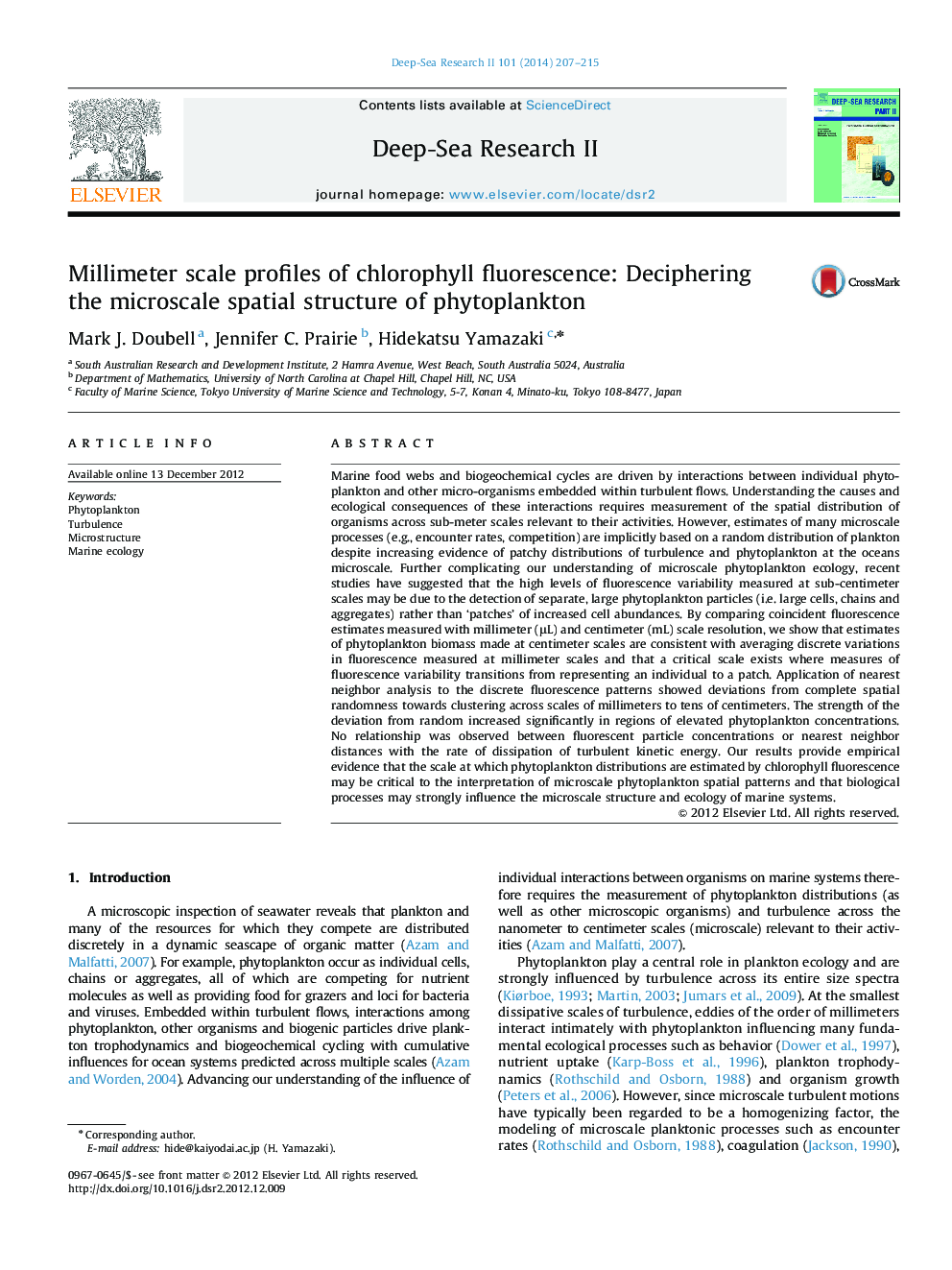| Article ID | Journal | Published Year | Pages | File Type |
|---|---|---|---|---|
| 4536373 | Deep Sea Research Part II: Topical Studies in Oceanography | 2014 | 9 Pages |
Marine food webs and biogeochemical cycles are driven by interactions between individual phytoplankton and other micro-organisms embedded within turbulent flows. Understanding the causes and ecological consequences of these interactions requires measurement of the spatial distribution of organisms across sub-meter scales relevant to their activities. However, estimates of many microscale processes (e.g., encounter rates, competition) are implicitly based on a random distribution of plankton despite increasing evidence of patchy distributions of turbulence and phytoplankton at the oceans microscale. Further complicating our understanding of microscale phytoplankton ecology, recent studies have suggested that the high levels of fluorescence variability measured at sub-centimeter scales may be due to the detection of separate, large phytoplankton particles (i.e. large cells, chains and aggregates) rather than ‘patches’ of increased cell abundances. By comparing coincident fluorescence estimates measured with millimeter (μL) and centimeter (mL) scale resolution, we show that estimates of phytoplankton biomass made at centimeter scales are consistent with averaging discrete variations in fluorescence measured at millimeter scales and that a critical scale exists where measures of fluorescence variability transitions from representing an individual to a patch. Application of nearest neighbor analysis to the discrete fluorescence patterns showed deviations from complete spatial randomness towards clustering across scales of millimeters to tens of centimeters. The strength of the deviation from random increased significantly in regions of elevated phytoplankton concentrations. No relationship was observed between fluorescent particle concentrations or nearest neighbor distances with the rate of dissipation of turbulent kinetic energy. Our results provide empirical evidence that the scale at which phytoplankton distributions are estimated by chlorophyll fluorescence may be critical to the interpretation of microscale phytoplankton spatial patterns and that biological processes may strongly influence the microscale structure and ecology of marine systems.
